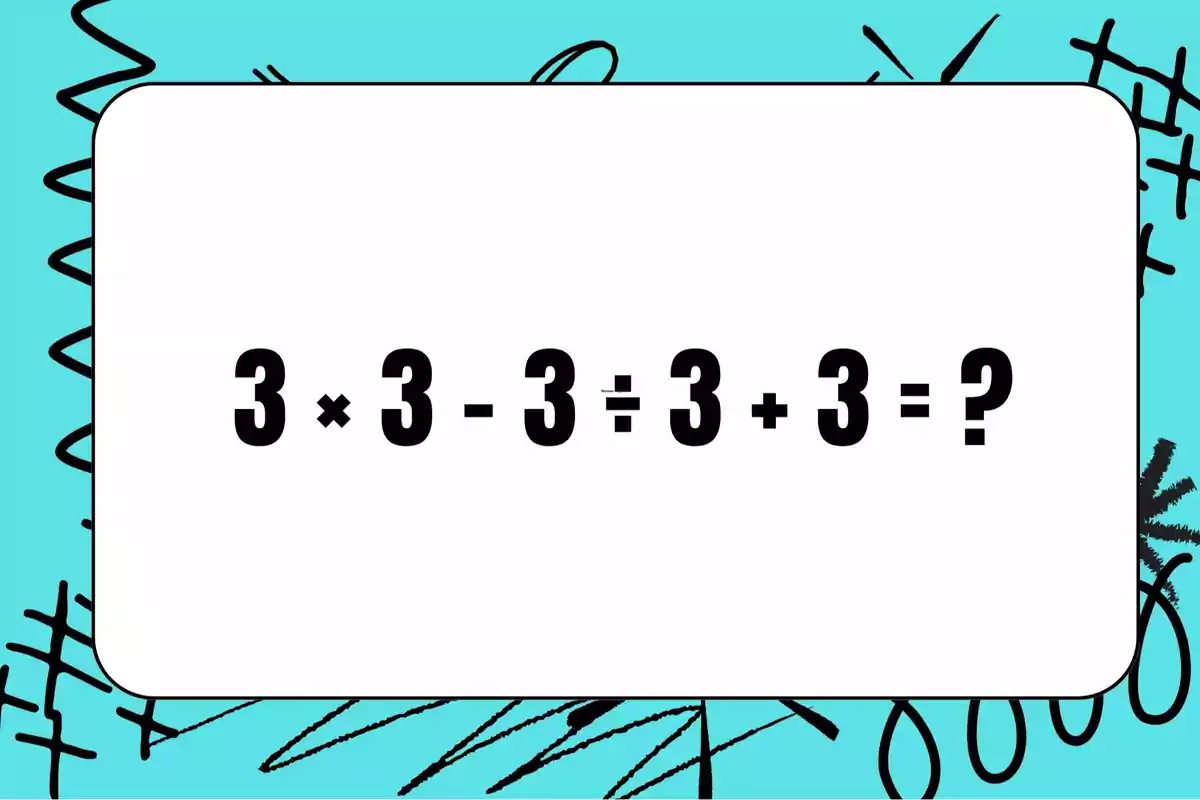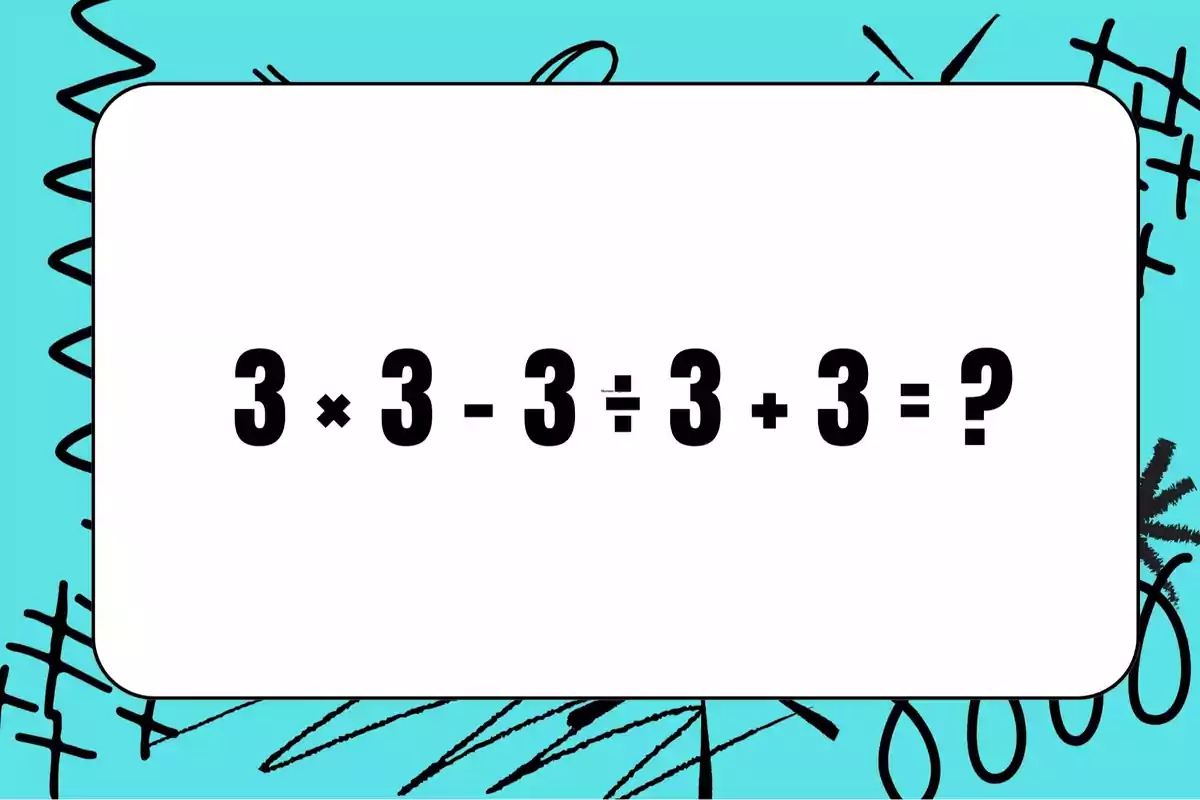
Dare to solve the following exercise in 1 minute and put your left-handed friend to the test.
A simple mathematical equation went viral on social media and divided opinions. Are you willing to solve it correctly?
In the fast-paced world of viral challenges, a new math exercise is generating all kinds of reactions on social media. At first glance, it seems easy, but thousands of people answered incorrectly. The reason? Not applying the order of operations correctly.
The equation is as follows: 3 × 3 − 3 ÷ 3 + 3 = ?
One of the most important steps to arrive at the correct result for this operation is to use the mathematical hierarchy criterion correctly, known as PEMDAS in English:
P: Parentheses
E: Exponents
MD: Multiplication and Division (from left to right)
AS: Addition and Subtraction (from left to right)
Many users on networks like X calculated from left to right without respecting this order, ending up with answers like 5, an incorrect option that becomes common when the order of operations is omitted.

Step by step: how is it solved correctly?
If you still haven't been able to find the correct result, don't worry, here's a simple step-by-step guide so you can learn to solve these exercises without needing to use a calculator.
- First, Multiplication and Division, from left to right:
3 × 3 = 9
3 ÷ 3 = 1
The equation is now: 9 − 1 + 3
- Then, Addition and Subtraction, also from left to right:
9 − 1 = 8
8 + 3 = 11
Correct answer: 11
What are the benefits of solving math exercises?
Beyond viral entertainment, this type of math exercise has concrete benefits for mental health. Solving logic problems and arithmetic operations regularly stimulates critical thinking, improves working memory, and strengthens mental agility. Studies in cognitive neuroscience show that spending a few minutes a day on these types of challenges can help prevent cognitive decline over time.
Additionally, these activities increase concentration, reduce stress, and generate a small dose of dopamine—the pleasure hormone—every time we correctly solve a puzzle. In other words: training the mind with challenges like this not only makes us quicker with calculations, it also makes us feel better.
More posts: